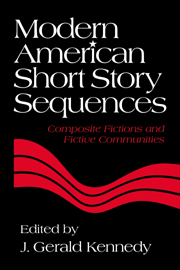15 results
Chapter 6 - Fitzgerald’s Expatriate Years and the European Stories
-
-
- Book:
- The Cambridge Companion to F. Scott Fitzgerald
- Published online:
- 26 October 2023
- Print publication:
- 09 November 2023, pp 125-153
-
- Chapter
- Export citation
Contributors
-
-
- Book:
- The Cambridge Dictionary of Philosophy
- Published online:
- 05 August 2015
- Print publication:
- 27 April 2015, pp ix-xxx
-
- Chapter
- Export citation
Contributors
-
-
- Book:
- The Cambridge Handbook of Applied Perception Research
- Published online:
- 05 July 2015
- Print publication:
- 26 January 2015, pp xi-xiv
-
- Chapter
- Export citation
Introduction to the Volume
-
-
- Book:
- The Letters of Ernest Hemingway
- Published online:
- 14 August 2020
- Print publication:
- 30 September 2013, pp xlix-lix
-
- Chapter
- Export citation
Notes on Contributors
-
-
- Book:
- Ernest Hemingway in Context
- Published online:
- 18 December 2013
- Print publication:
- 17 December 2012, pp xi-xxii
-
- Chapter
- Export citation
Chapter 15 - Modernist Paris and the Expatriate Literary Milieu
- from Intellectual and Artistic Movements and Influences
-
-
- Book:
- Ernest Hemingway in Context
- Published online:
- 18 December 2013
- Print publication:
- 17 December 2012, pp 153-162
-
- Chapter
- Export citation
7 - Fitzgerald’s expatriate years and the European stories
-
-
- Book:
- The Cambridge Companion to F. Scott Fitzgerald
- Published online:
- 28 May 2006
- Print publication:
- 25 October 2001, pp 118-142
-
- Chapter
- Export citation
10 - Hemingway, Hadley, and Paris
-
-
- Book:
- The Cambridge Companion to Hemingway
- Published online:
- 28 May 2006
- Print publication:
- 26 January 1996, pp 197-220
-
- Chapter
- Export citation
Index
-
- Book:
- Modern American Short Story Sequences
- Published online:
- 29 September 2009
- Print publication:
- 27 January 1995, pp 217-221
-
- Chapter
- Export citation
Contents
-
- Book:
- Modern American Short Story Sequences
- Published online:
- 29 September 2009
- Print publication:
- 27 January 1995, pp v-v
-
- Chapter
- Export citation
Frontmatter
-
- Book:
- Modern American Short Story Sequences
- Published online:
- 29 September 2009
- Print publication:
- 27 January 1995, pp i-iv
-
- Chapter
- Export citation

Modern American Short Story Sequences
- Composite Fictions and Fictive Communities
-
- Published online:
- 29 September 2009
- Print publication:
- 27 January 1995
Introduction: The American Short Story Sequence – Definitions and Implications
-
-
- Book:
- Modern American Short Story Sequences
- Published online:
- 29 September 2009
- Print publication:
- 27 January 1995, pp vii-xvi
-
- Chapter
- Export citation
From Anderson's Winesburg to Carver's Cathedral: The Short Story Sequence and the Semblance of Community
-
-
- Book:
- Modern American Short Story Sequences
- Published online:
- 29 September 2009
- Print publication:
- 27 January 1995, pp 194-216
-
- Chapter
- Export citation
Contributors
-
- Book:
- Modern American Short Story Sequences
- Published online:
- 29 September 2009
- Print publication:
- 27 January 1995, pp vi-vi
-
- Chapter
- Export citation



